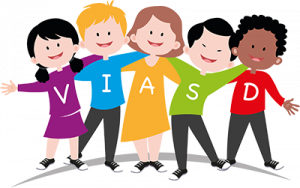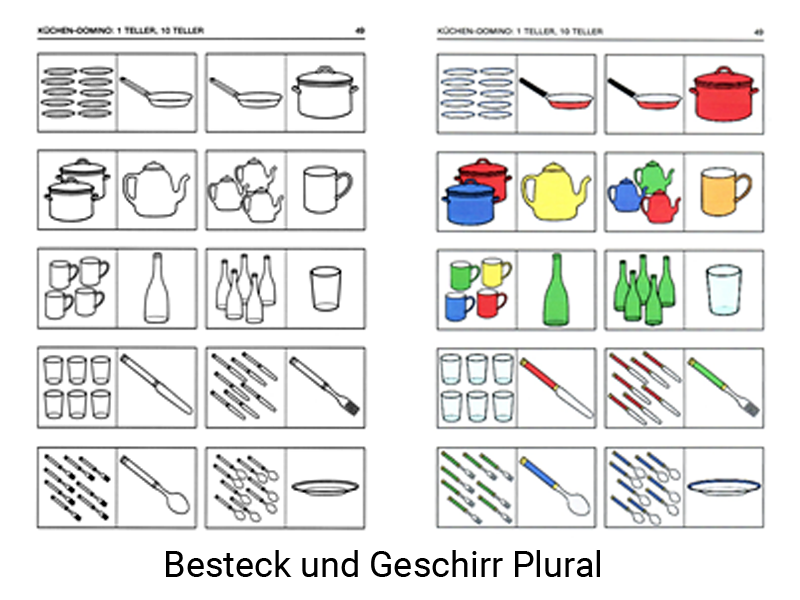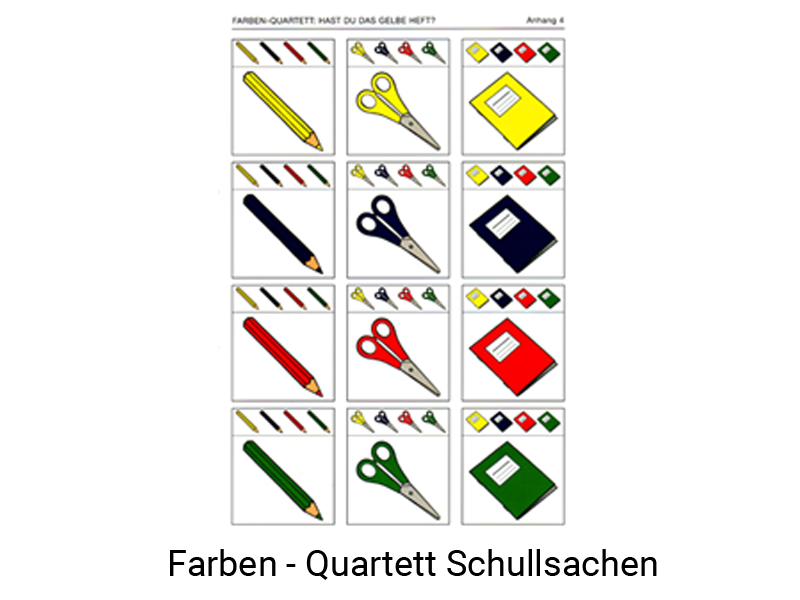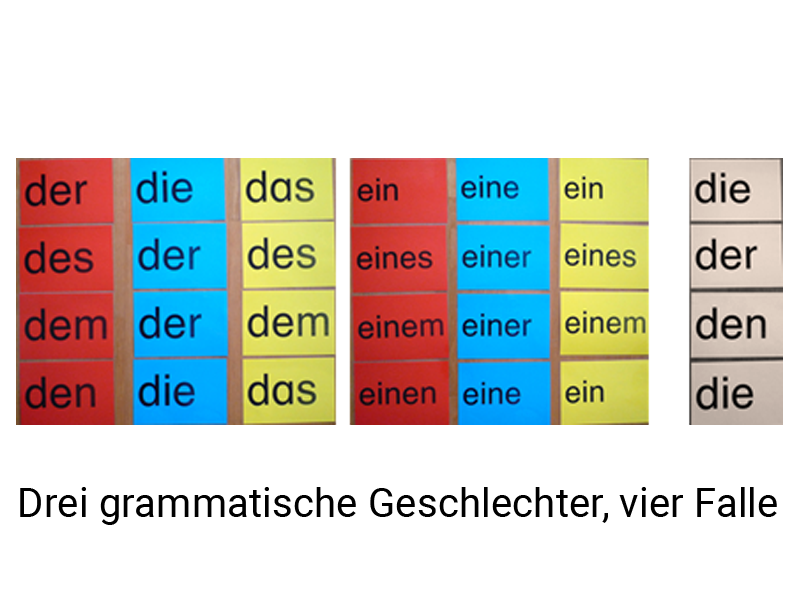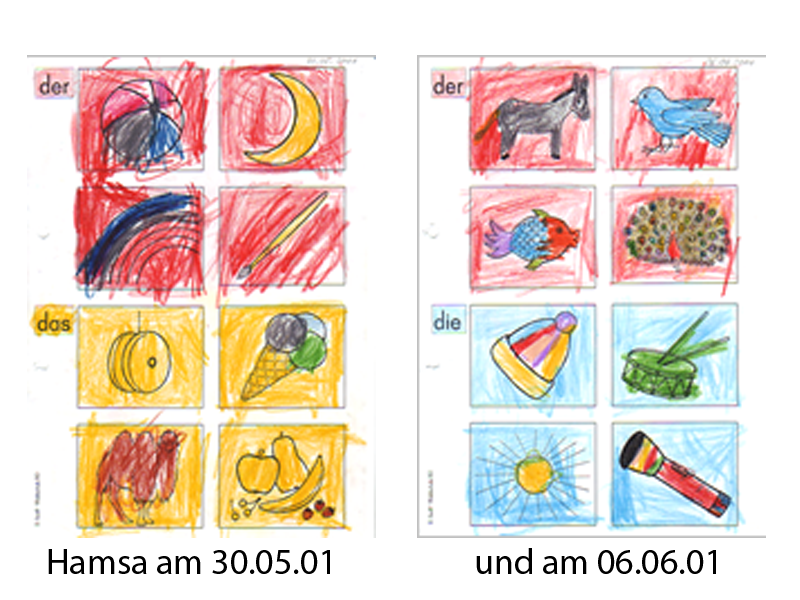Learning concept
German workshop for Kids
Dear parents and care givers,
Language learning is challenging because we seem to learn our home language spontaneously and effortlessly. In contrast, second language learning requires effort and conscious attention to learning. Nouns, verbs, adjectives, and prepositions pose particular difficulties when children acquire German language and this is why:
- Nouns have grammatical gender, plural, and four cases: nominative, genitive, dative and accusative
- Verbs have personal and tense forms
- Adjectives have declension and comparison
- Prepositions have meaning and dependent phrases
No less complex is the sentence structure with its pitfalls – position of verbs, negations and all other tricks have to be mastered to construct meaningful messages in everyday life. Then comes real life interaction and discourse and so on…
We practice all these things with children in a playful way through music, arts and crafts, and dancing, focusing on positive feedback and accurate reproduction.
An example of a Lesson Structure:
It’s important to offer opportunities for speaking from the very beginning, so the Circle time focuses on speaking activities and has two parts.
a) Introductions:
We use a cloth ball to pass to each other. The teacher starts with a simple sentence e.g.,
“My name is Carla. What’s your name?” The child answers according to the given format
and asks the learner sitting next to them. When the round is over, more question-and-answer combinations follow.
As many children are motivated to speak after the introduction we use this time for informal teacher-learner talk on a related topic.
Learning goals:
Learning to communicate personally relevant messages: Name, age, place of residence,
family topics
Speaking in full sentences
- Learning to use intonation to distinction between questions and answers
- Spontaneous speech is encouraged (How are you today? I’m fine today because…)
- Learning to count (for very young children counting begins with counting their age on fingers and the connection is made gradually)
Promoting a sense of community and belonging to a group (Who is next to you? Who is your best friend in the group)?
b) Topic related children’s songs (singing songs)
Learning goals:
- Better concentration and retention of vocabulary and grammar through music
- Promoting motor skills and body awareness through movement: naming different parts
of the body - Performing and naming different movements: bow, shake, pull, twist
- Learning adjectives: heavy, small, thick
- Learning verbs, meaning, and conjugation: I drink, you drink, we all drink water
- Practicing personal pronouns: I, you, he, she, it, we, you, you
- Distinction between masculine and feminine nouns
- Distinction between definite and indefinite article: A hand, the hand
- Learning singular and plural forms: A finger, two fingers
Learning vocabulary and grammar is a gradual process and requires an age-appropriate approach as well as fun ways of practicing to maintain motivation.
a) The approach: An example
In order to make it easier for children to learn new words with the corresponding article, we assign articles to specific colours:
- Masculine article = red
- Feminine article = blue
- Neuter article = yellow
Whenever new words are encountered, they are introduced with their corresponding colours. This routine and linking articles and colours aids automaticity and fluency.
b) The sequence of learning: An example
Children choose two items from a prepared selection of toys or cards. Then each child shares the items by placing them in the middle of the circle. The teacher invites children to sort the objects, thinking about items that belong together and why. For example, some objects belong together because they are the same shape or colour, you can eat them or play with them. Then, learners are asked to sort objects in another way. In this way, learners not only learn that objects have a specific name but that each noun also has an article. The teacher explains that there are three articles: der, die, das. When naming articles, the corresponding colour is placed on the floor. Children repeat together, e.g. the ball, the pen, the pearl, the bread.
Circle time for grammar exercises:
- What do you have there?
- What are you putting down?
- Where is…?
- Accompanied by singular, plural and syllable clapping
c) Closing Circle
At the end of the vocabulary round we sing “Der, die, das Lied” and finally “Wash your hands”.
With this song we lead into the break. The children know that they are now being given a well-deserved break and are participating enthusiastically.
A time to relax, eat together, and actively listen and speak.
a) “What’s for snack?” activity – We shake hands and say a rhyme together. Then we talk about the food e.g., “I have an apple; What do you have?” Learners count what they have in their lunch boxes and ask children next to them. Everyone has a turn.
b) Practice active listening – While children are eating, we listen to an audio book thereby children practice listening. Alternatively, the teacher reads aloud a story showing illustrations so that children can make meaning from the pictures.
c) Chatting – This is a time to talk casually about any topic. The teacher addresses various relevant themes until all children complete their snack. Most of the time we repeat days of the week together, talk about the seasons or birthdays etc.
Malen, schneiden, kleben
A time to paint, cut, glue, create. Multisensory approach to teaching helps to consolidate new vocabulary and grammar. For this reason, we do crafts after the snack break.
a) Paint the background depending on the noun article – Children colour picture backgrounds in red, blue, or yellow depending on the image presented. Teachers encourage learners to identify their picture with the article e.g., in a whisper.
b) Paint the picture – When backgrounds for all pictures are ready, children can colour in another page using a template.
Closing songs
Permitting the time, we play a game at the end and sing our two closing songs e.g., Bello.
Bello is a popular game and songs such as “Teddybär, Teddybär” and “All the people”.
Visit us
Karlstr.10, 64283 Darmstadt
daily from 13:45 - 16:30
Please make an appointment via telephone first
